How to force bulbs indoors for Christmas
Learn how to force bulbs indoors for Christmas and have beautiful blooms during the coldest time of the year

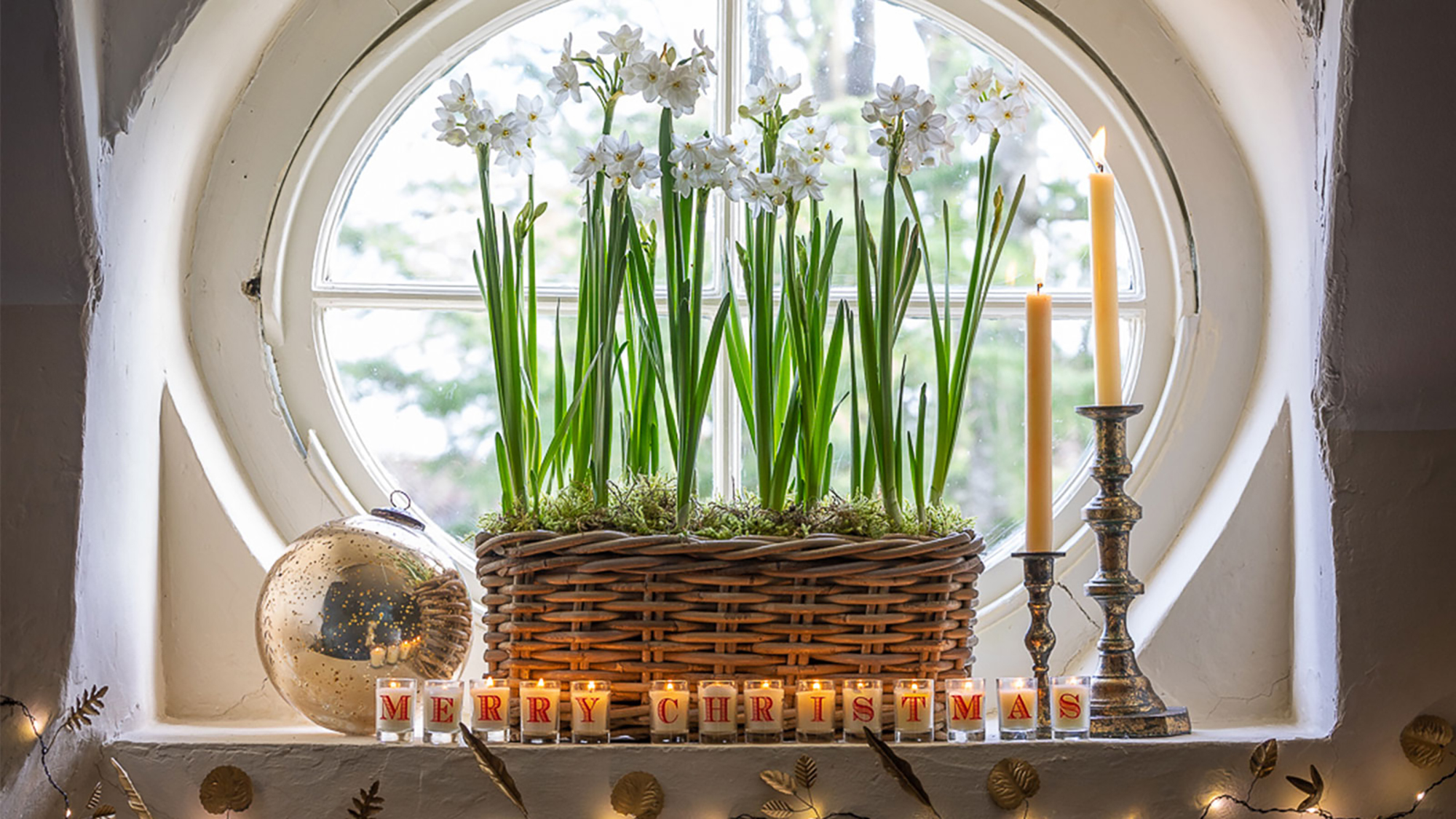
Knowing how to force bulbs indoors for Christmas is a surefire way to bring color and life into your home during the depths of winter. However, it does require some preparation and forward planning.
'Forcing bulbs indoors is one of the best things to do in December to liven those monochromatic winter months. The bleak December winds and days of incessant rain drive even the hardiest gardener inside,' explains garden expert Sarah Raven.
How to force bulbs indoors for Christmas
Learning how to force bulbs indoors for Christmas will mean you can enjoy the best Christmas plants, give them as gifts, or use them as Christmas decor in your own home. Forced bulbs are a key part of making this poinsettia wreath – perfect for adding festive cheer to your Christmas door decor ideas.
Learning how to force bulbs indoors for Christmas is slightly more challenging than forcing bulbs generally, as it is more time sensitive. In order to avoid disappointment, we would recommend staggering your planting – starting eight weeks before Christmas for prepared bulbs, and planting more at seven weeks and then six weeks before Christmas to ensure you have forced bulbs ready for the big day. It will also mean that you have newly flowering bulbs throughout January – a great way to beat those January blues.
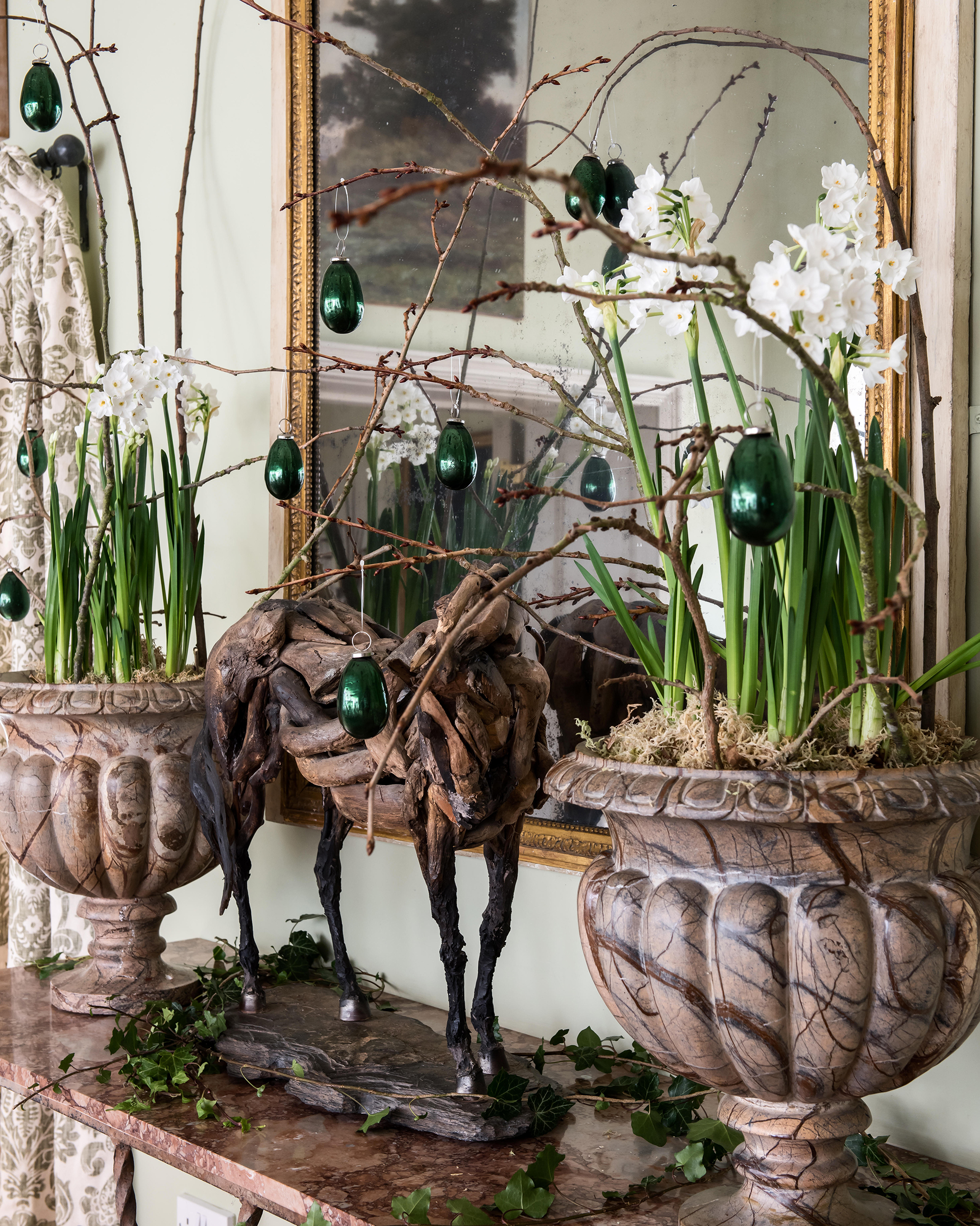
1. Purchase your bulbs
The first step in learning how to force bulbs indoors for Christmas is to purchase your bulbs – look for bulbs that are designed for forcing. 'Not all bulbs will flower indoors, so make sure to choose a type that is bred for forcing. Look for terms like prepared, forced, or narcissus on the packaging,' says Lindsey Hyland, founder of UrbanOrganic Yield.
When it comes to choosing bulbs to force for Christmas, there are lots from which to choose including, indoor bulbs for low light spots.
- Hyacinths
- Grape hyacinths/muscari
- Daffodils
- Crocus
- Tulips
- Snowdrops
- Amaryllis

2. Soak your bulbs
There is debate on whether it is necessary to soak your bulbs, but some gardeners believe that it speeds up the process of waking up the bulbs. Lindsey Hyland recommends 'placing the bulbs in a bowl or bucket and letting them soak for 12 to 24 hours.'
Design expertise in your inbox – from inspiring decorating ideas and beautiful celebrity homes to practical gardening advice and shopping round-ups.
3. Plant your bulbs
An essential step to learning how to force bulbs indoors for Christmas is planting your bulbs. Be sure to choose a pot that has good drainage – you can always place this pot inside a more decorative one later.
'Fill a container with potting mix and place the bulbs in it, pointed end up. Cover with more potting mix until the tips are just visible above ground. Water the container well and place it in a cool, dark place. Make sure to keep the soil moist during this time,' says Lindsey Hylands.
If you're looking for more guidance on how to plant bulbs in pots, then it is not too dissimilar from planting bulbs as part of your container gardening ideas – the main difference is the size and style of the pot.
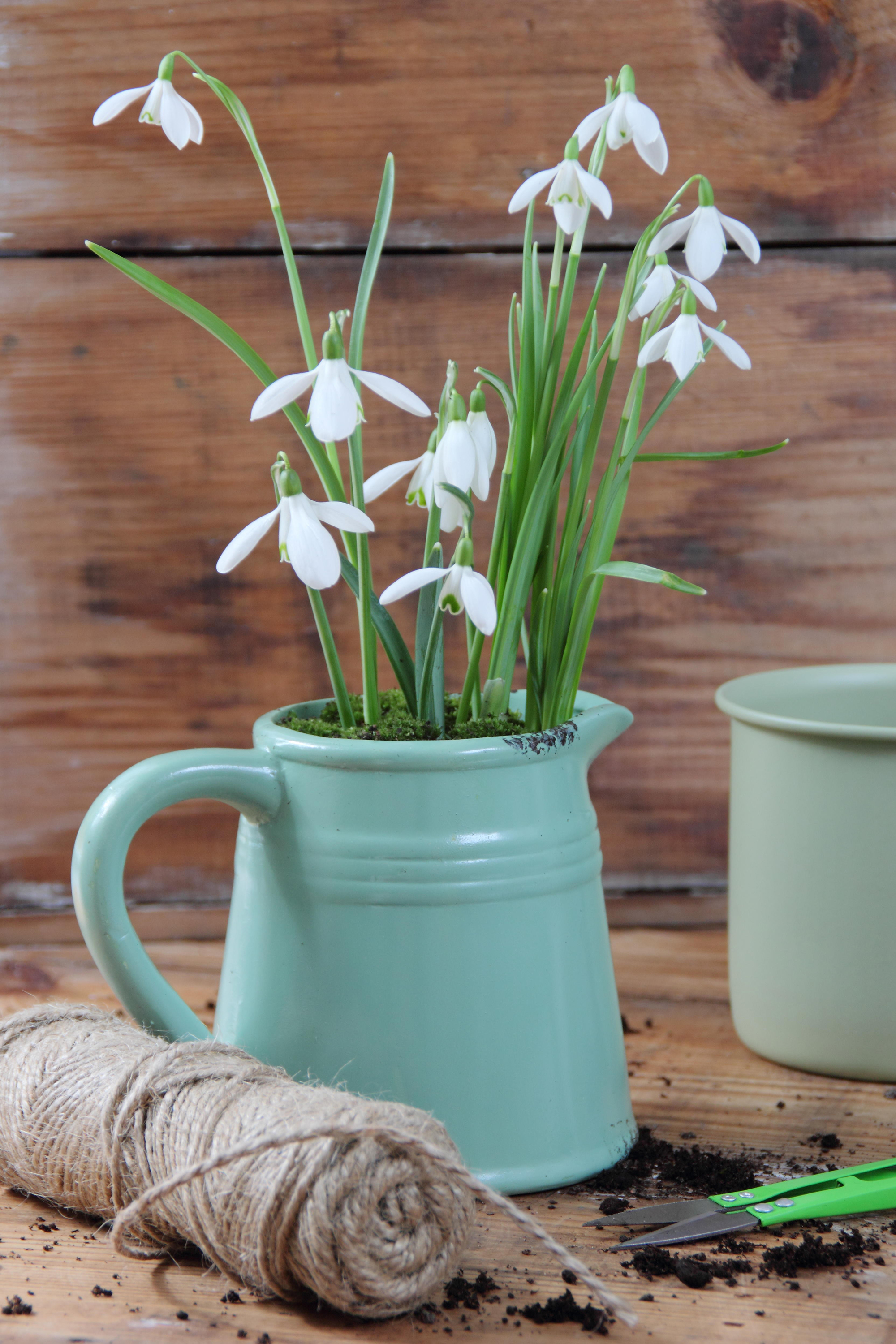
4. Chill your bulbs
The key difference between planting bulbs and learning how to force bulbs indoors for Christmas is that they will need chilling before they start to grow.
'Most bulbs for forcing need 10 to 15 weeks in the cold to flower well,' advises Sarah Raven. So in order to get your bulbs to flower in time for Christmas, you need to start chilling your bulbs in August.
'Ideally, keep them at a temperature between 34.7°F and 50°F in a cupboard, shed, or garage. This cold period makes the bulb think it is winter, stimulating a biochemical response to make it start flowering,' advises Sarah Raven.
Alternatively, 'put the unplanted bulbs in a paper bag in the bottom of the fridge for four to six weeks.' You can start this as late as the end of October to ensure Christmas flowering.
5. Place in a warmer place and display
'Once your bulbs have had their cool period, you can bring them in somewhere warmer, above 59°F, and they will quickly sprout, then bloom. As far as they are concerned, spring has arrived, and you’ll have beautiful blooms in time for Christmas,' advises Sarah.
If you have chilled your bulbs in the fridge, these will need to be quickly planted in their pots, before placing them in a warm spot.
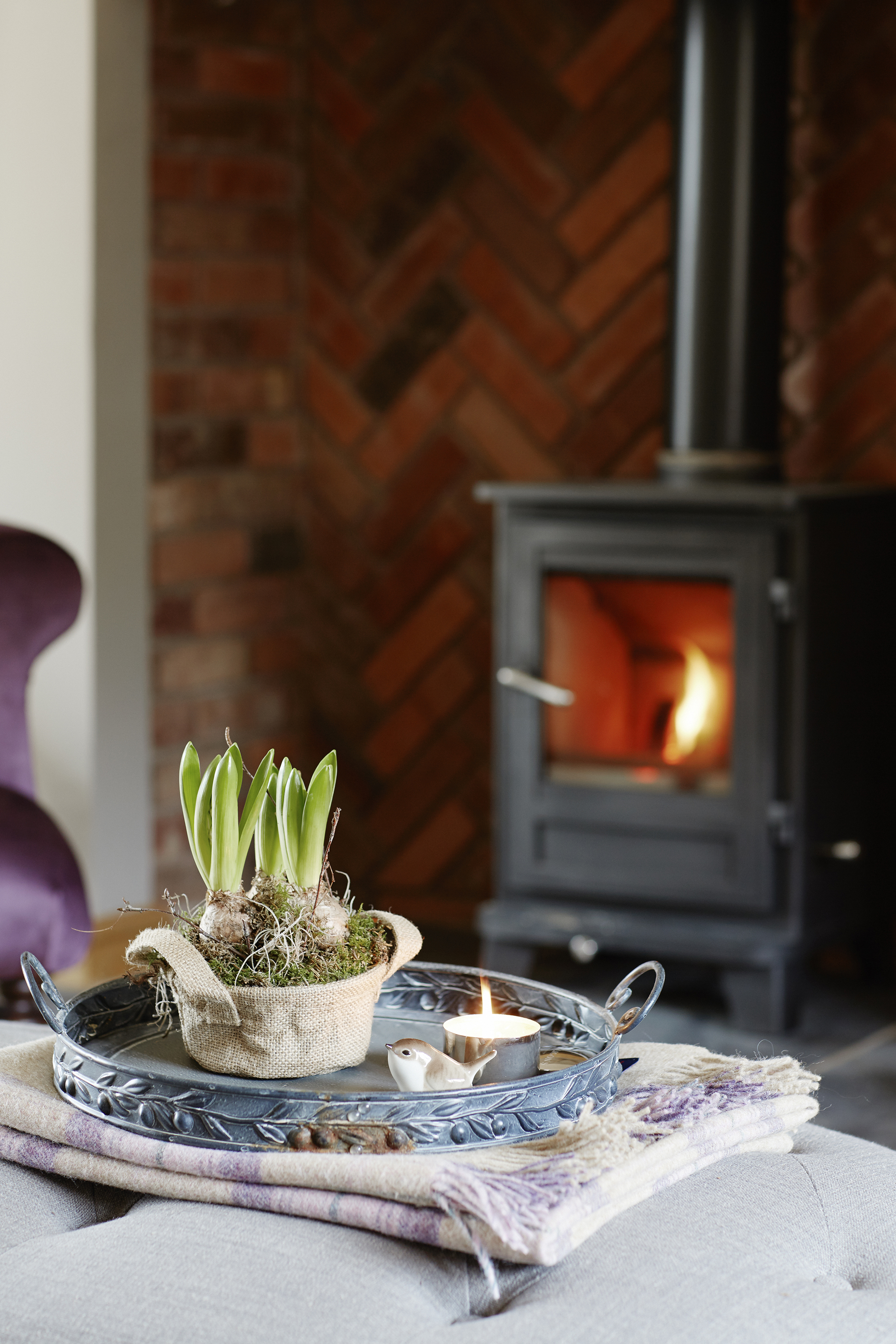
How to force bulbs indoors for Christmas using prepared bulbs
If it is too late to prepare your bulbs for this Christmas, then you can buy ready-prepared bulbs. However, your choice will be more limited as there will be fewer bulbs available.
'Prepared bulbs have been pre-chilled to force them to flower at Christmas or early in the New Year, so those are the easiest and best option for flowers this Christmas. Hyacinths are often prepared, and we also sell lots of prepared narcissus for forcing at this time of year,' says Sarah Raven. 'Plant your prepared bulbs as soon as possible or keep them somewhere cool and dark. If there is already a green shoot coming out of the bulb when you receive them, don’t remove it!'
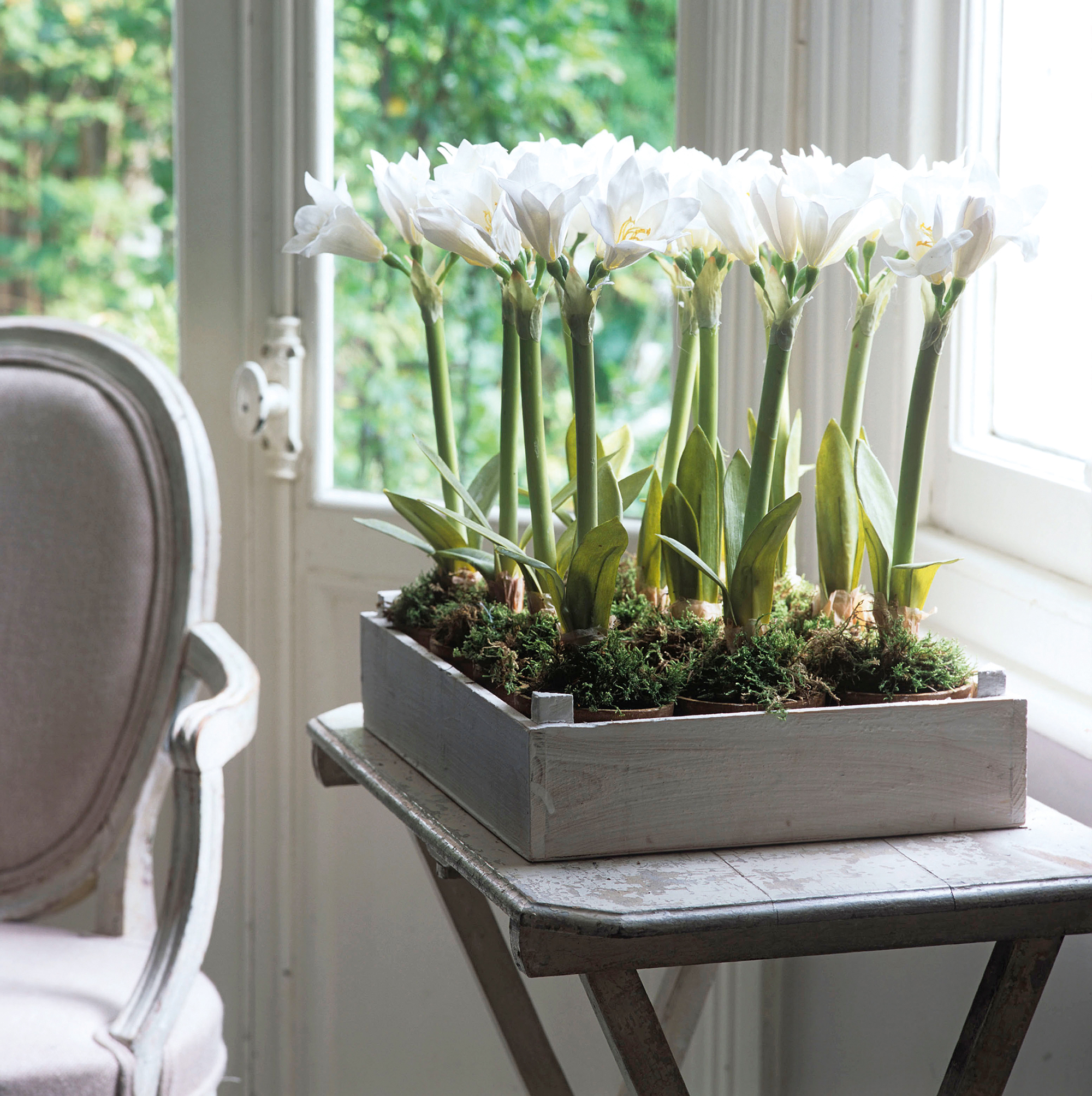
FAQs
What bulbs can be forced without chilling?
Not all bulbs necessarily need chilling – so if your desire to force bulbs is a little last minute, then there is still hope.
- Amaryllis bulbs will bloom six to eight weeks after planting.
- Paperwhite narcissus will bloom three weeks after planting.
How do you force Amaryllis bulbs for Christmas?

Learning how to force Amaryllis bulbs for Christmas is surprisingly easy – especially if you've got the right kit. We love this all-in-one Amaryllis Bulb Kit from Amazon as the vase is designed to support the stem as well as force the bulb, plus there are lots of Amaryllis varieties from which to choose.
- Six weeks before Christmas (approx. 13 November), purchase Amaryllis bulbs that are designed for forcing – the label will say whether they are suitable.
- Fill a bulb forcing vase to the neck with water.
- Trim any brown, dry roots off the bulb.
- Place the bulb in the vase so that the root area is submerged – ensure that the bulb itself is not in contact with the water to prevent rot.
- Position in a warm sunny location – ideally around 60 to 70°F.
- It will take around six weeks for your amaryllis to bloom.
How do you grow waxed bulbs for Christmas?
If you're looking for an effortless way to force bulbs for Christmas then waxed bulbs are the way to go. All they need is sunlight – even the least green-fingered of us can't go wrong. Simply purchase your bulb and a stand and place them on a sunny windowsill. The bulb will grow and eventually – within three to six weeks – flower.
Waxed bulbs are as their name suggests, bulbs that have been dipped in wax. The wax contains the moisture and heat that the bulbs need to grow. There are plenty of different varieties – hyacinths are the most common – and wax colors from which to choose, including this White Flecked Red Blooming Waxed Amaryllis Bulb from Amazon – we love its snowy appearance, perfect for Christmas.

Having graduated with a first class degree in English Literature, Holly started her career as a features writer and sub-editor at Period Living magazine, Homes & Gardens' sister title. Working on Period Living brought with it insight into the complexities of owning and caring for period homes, from interior decorating through to choosing the right windows and the challenges of extending. This has led to a passion for traditional interiors, particularly the country-look. Writing for the Homes & Gardens website as a content editor, alongside regular features for Period Living and Country Homes & Interiors magazines, has enabled her to broaden her writing to incorporate her interests in gardening, wildlife and nature.